I have a dataframe with 2 arrays that I want to compare and year (2017, 2018, 2019, 2020, 2021)
d_value d_price year
-0.5064707042427661 0.023998098076044583 2017
0.28441876232859986 0.0022609116336060886 2017
0.5367803487234388 0.13772218694253624 2017
0.0377291747906765 0.021950729043333617 2017
-0.18032315533671328 -0.04870435126455952 2017
-0.36067080655671513 -0.019264936817780298 2017
-0.372303636796094 0.01799282703076832 2017
...
0.007174422512419509 0.0019633270749088716 2019
-0.12315438362311693 -0.001272120509836161 2019
0.06807880349789097 -0.027139767879056143 2019
-0.0415780440397856 0.0005471861484347418 2019
-0.07717256578262432 -0.011382707712158657 2019
0.2627255062420586 -0.0021274426812466496 2019
-0.13879042170946043 0.009918696052991338 2019
-0.040799674958042265 -0.0044788215666135 2019
....
I used this to plot all years in one graph
sns.set(rc={'figure.figsize':(6,5)})
plt = sns.scatterplot(data=corr, x="d_price", y="d_value", hue="year")
#plt.title('Price-Volume Correlation ', fontsize=18)
plt.set_xlabel("Change in price", fontsize = 10)
plt.set_ylabel("Change in total transaction volume (USD)", fontsize = 10)
but there are just too many data points, so I want to have separate plots by year, 5 scatter plots in one grid. Is there a way to do that instead of manually producing 5 separate plots? and also, is there a way to insert a text in each plot something like "corr: 0.22"? Thanks a lot in advance!
